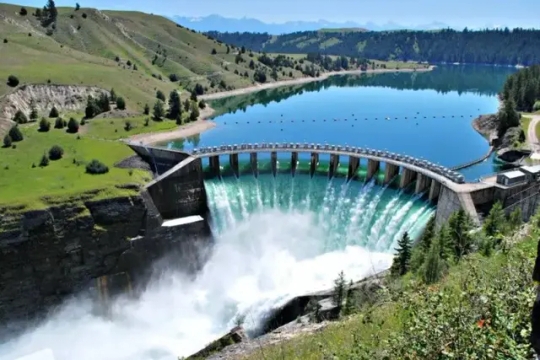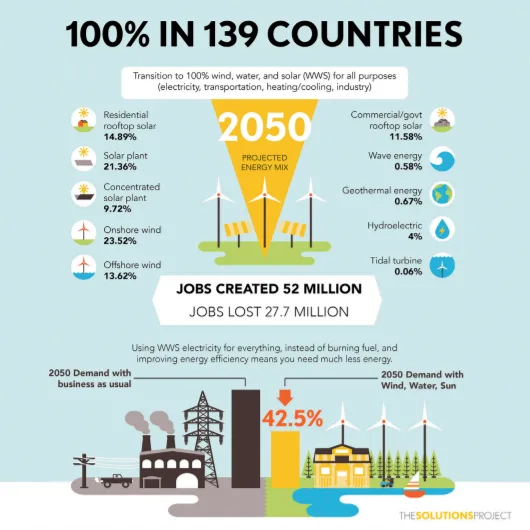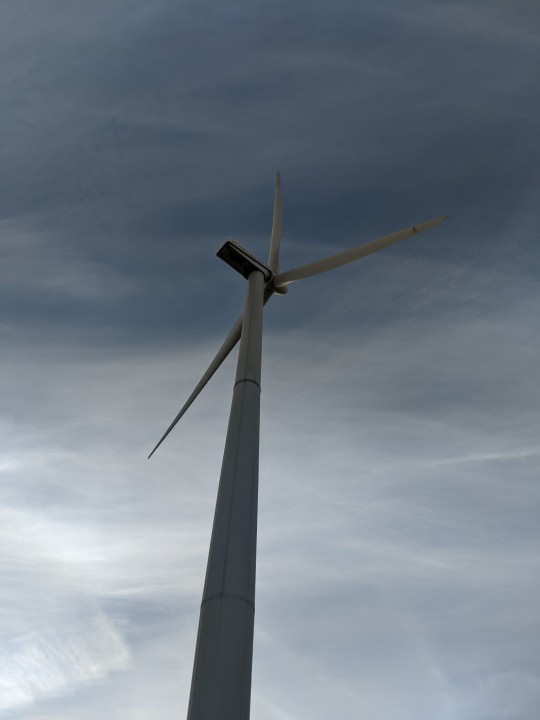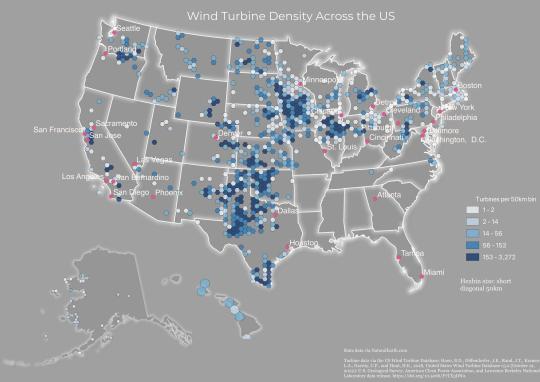#wind turbines
Text

COLOSSAL GODS ON THE EXPANSES
(plainfield, iowa)
1K notes
·
View notes
Text
#good news#ireland#wind farm#wind energy#wind turbines#wind power#green energy#renewable power#renewable energy
798 notes
·
View notes
Text
Countries That Generate 100% Renewable Energy Electricity

Pictured: Hydropower is the most widely used source of renewable energy-generated electricity. This dam is located near Polson, Montana.
Is 100% Renewable Resource-Generated Electricity Possible?
"With concerns growing regarding burning fossil fuels and their connection to global warming, a great debate is occurring regarding the feasibility of producing electricity entirely from non-carbon emitting green renewable energy sources such as geothermal, hydroelectric, wind, and solar. Skeptics and naysayers claim that achieving such a goal is impractical, would destroy the economy, and is in the realm of pie-in-the-sky thinking.
But is it actually impractical and unattainable? The answer is clearly "no" since there are already several countries that generate 100% of the electricity they use from renewable sources of energy. There are also many other countries that obtain over 90% of the electricity they use from renewable energy sources. Despite the negative rhetoric by some, there’s nothing impractical about using renewable energy to generate electricity on a grand scale.
The Countries Leading the Way to a 100% Renewable Energy Electricity Future
The following is a list of countries that are leading the world into the new frontier of economies that run their electrical grids either entirely or nearly entirely on renewable energy per a 2018 report by the International Renewable Energy Association (IREA) and the U.S. Energy Information Administration (EIA) statistics. This list and the percentages are subject to change over time, but it provides a good snapshot of just how practical renewable energy currently is for electricity generation.
Iceland obtains 100% of the electricity it needs from renewable energy sources. Iceland is somewhat unique since volcanic activity on the island provides a significant geothermal energy source that is utilized to provide approximately one-quarter of the country’s electricity. The remaining three quarters are provided by hydro-power.
Paraguay obtains 100% of the electricity it uses from renewable sources. Huge hydropower dams provide all of Paraguay's electricity needs, as well as supply neighboring Argentina and Brazil with electricity.
Costa Rica is another country leading the way towards 100% renewable-produced electricity. During 2018, Costa Rica met all of its electricity needs using renewable energy sources such as hydro-power, geothermal, biomass, wind, and solar for 300 days in a row.
Ethiopia, Kenya, Namibia, Norway, Tajikistan, and Uruguay are countries currently generating greater than 90% of the electricity they use from renewable energy sources. Some of these countries are working towards running their electric networks entirely from renewable energy.
Some things stand out from the list of countries leading the way in electricity generated from renewable energy.
They are relatively small countries.
They have abundant renewable natural resources, particularly abundant water resources available to generate hydro-power.
The list includes both wealthy developed and poor developing countries.
The fact that both developed wealthy countries and poor developing countries are leaders in renewable energy-produced electricity indicates that the cost of constructing renewable energy resources is not a limiting factor. In fact, developing countries can justify the capital cost of building renewable energy sources of electricity due to the fact that the operating costs are relatively low and predictable (not subject to commodity price swings), and renewable energy allows a country to be self-sufficient in meeting its electricity needs.
Large Developed Countries Can Also Produce 100% Of Their Electricity From Renewable Energy
Critics and naysayers might say that while these achievements by small countries are impressive, implementing renewable energy on a large scale is impractical for larger developed countries. But is it really impractical?
Cost and technological barriers are not what they once were for renewable energy. In fact, costs for renewable energy continue to decline year after year, and renewable energy technologies continue to develop and become more efficient. Many countries have not even come close to tapping their renewable energy potential or even tried some of the technologies available, such as electricity generated by wave or tidal power. Additionally, the argument that renewable energy is only useful when it is being generated is becoming irrelevant since large utility-scale batteries are now available that have the capability to store electricity generated by renewable energy and allow it to be used when needed.
Clearly, the answer is yes. Large developed countries can produce 100% of the electricity they need from renewable sources. It is only a matter of the will and investment at this point to make the changeover from fossil fuel-generated electricity to renewable energy electricity generation. The technical barriers are not as great as naysayers claim, as proven by smaller countries that have already reached the 100% threshold. Moving towards 100% renewable energy sources of electricity will become easier over time as wind, solar, and other renewables become more efficient and large utility-scale battery storage technologies become capable of storing larger quantities of energy for use when needed.

Pictured: Researchers lay out a plan for nearly 140 countries that could be powered 100 percent by renewable energy by 2050. spectrum.ieee.org
The City of Los Angeles Leads the Way in the U.S. With Inexpensive Solar
Various forms of renewable energy have experienced significant cost reductions to a point at which they are competitive and, in some cases, cheaper than traditional electrical energy sources such as coal, oil, and natural gas. This cost reduction trend will accelerate the change over to renewable sources of electricity. For example, the City of Los Angeles signed a deal in July 2019 for a large solar electricity array that will provide 7% of the city's electricity by 2025 at only two cents per kilowatt-hour (kWh). This is far cheaper than fossil fuel-derived electricity.
In addition to being cost-competitive, the practicality and reliability of renewable energy are poised to make major advances as large utility-scale battery technologies are rolled out that can be used to capture renewable energy when it is created, so the electricity can be used at a later time when needed. The Los Angeles solar array project includes utility-scale battery backup at a cost of 1.3 cents per kWh, so the electricity generated by the sun will be available even when the sun is not shining.
Los Angeles has a goal of achieving 100% renewable electricity generation by 2050. This solar contract is a big step toward achieving their goal."
-via TurboFuture, February 21, 2023
#renewables#renewablefuture#renewable energy#clean energy#green energy#solar power#solar panels#fossil fuels#climate crisis#climate change#global warming#hydropower#geothermal#wind power#wind turbines#iceland#paraguay#costa rica#ethiopia#kenya#namibia#norway#tajikistan#uruguay#united states#los angeles#battery#hope posting#hopepunk#sustainability
315 notes
·
View notes
Text
Storm destroying a windmill | source
449 notes
·
View notes
Text

a recurring dream
154 notes
·
View notes
Text
In Germany, the windmills have not been spinning for days. Do you know why? Because they need diesel to work, and diesel is in short supply.
We were told these are green? You Decide 🤔
#pay attention#educate yourselves#educate yourself#knowledge is power#reeducate yourself#reeducate yourselves#think for yourselves#think about it#think for yourself#do your homework#do your own research#do some research#ask yourself questions#question everything#wind turbines#lies#government corruption
242 notes
·
View notes
Text







Desert Interpretation Centre, Antofagasta, Chile - Emilio Marín & Juan Carlos López
#Emilio Marín & Juan Carlos López#architecture#design#building#modern architecture#interiors#minimal#concrete#metal cladding#corrugated#rust#desert#landscape#research centre#plywood#wind turbines#chile#south america#cool architecture
172 notes
·
View notes
Text

Wow!
154 notes
·
View notes
Text






#umutrnblg#postlarım#photography#photographyday#nature#windenergy#wind turbines#sunset#foça#rumll#sarhoskedi#kaanbubelli#i̇zmir#bokmutluyuzaqq#tomarrowski#petricorsworld#landscape#travel#visnelimeybuzz#cottage aesthetic#cottagecore#camping#vvedalar#cottage#my work#work
228 notes
·
View notes
Text


through the rain
#mine#photo#rain#wind turbines#americana#digital#photography#photographers on tumblr#texas#southern gothic#western gothic#rural#rural gothic#western#american gothic#landscape#country#gothic#small town#♡
147 notes
·
View notes
Text


Zephyr was running today for the first time in forever 💕 went out to sit with him for a bit, and he gave me another bolt cap as a thank you sooo now I have three
56 notes
·
View notes
Text

ASAHI, JAPAN.
97 notes
·
View notes
Text

382 notes
·
View notes
Text
"There’s something deeply comical about suggesting that seagulls are smart enough to wait for you to look away before stealing your french fries, but dumb enough to fly into wind turbine blades.
A two-year study on the interactions of several seabird species at an offshore wind farm found that not a single case of birdstrike was recorded over the study period or in the 10,000 videos taken.
Looking at herring gulls, gannets, kittiwakes, and great black-backed gulls, Swedish state wind company Vattenfall found that most of the birds maintained a 50 to 230-yard distance between themselves and the radius of the spinning turbines.
“This is the first time that any kind of bird species has been studied this closely and in detail at an offshore wind farm,” said study author Henrik Skov. “And these birds are really good at avoiding the turbines. Now we need studies on more varieties.”
The study was conducted on a wind farm consisting of 11 offshore turbines near Aberdeen, Scotland. It used radar surveys and mounted video cameras to gather data.
Why these seabirds avoided the turbines could be down to the individual species observed since other studies have shown seabirds tend to rank high in offshore wind turbine mortality, and of medium risk for land-based wind turbine mortality.
Skov also offered that it could be the turbines are, for one reason or another, outside of prominent flight corridors, and therefore aren’t where birds have historically flown either for migration and nesting purposes, or feeding.
The study is a big milestone in scientists’ attempts to learn how and where to build wind turbines so that they don’t interfere with birds’ flight patterns. If there is something in the data of this study or future observations that could reveal the secret as to why there was no mortality at the Aberdeen wind farm, it could mean that hundreds of thousands of birds could be saved in the future."
-Good News Network, 3/31/23
#wind farm#wind turbines#renewable energy#birds#migratory birds#seabirds#conservation#good news#hope
426 notes
·
View notes
Text
Football YouTuber: -and if you’re really down, join my sports gambling circuit where you can bet real money
DeVry University 15 second unskippable advertisement: you, fleshman, do you Want To Die On The Windmills?
104 notes
·
View notes
Photo

Wind turbine density across the US.
by u/Sir_Rains_A_Lot
141 notes
·
View notes